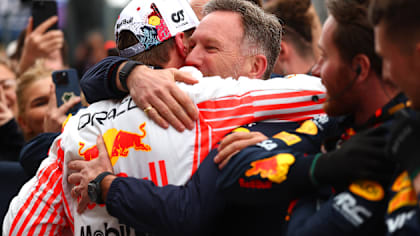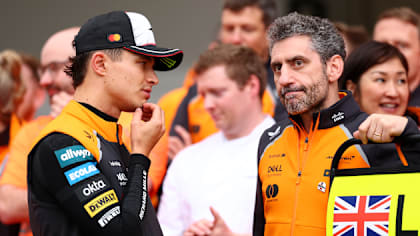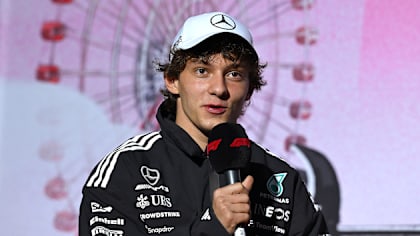
Feature
Coming back to win – Why Aston Martin's first F1 entry was one to forget
By Peter Nygaard
Share

After a break of more than 60 years, Aston Martin are on the way back to Formula 1 in 2021. We look back at the team's tough entry into F1 in the late 1950s...
This article originally appeared in the 2020 Bahrain Grand Prix race programme, which you can download for free here
A decade ago, Mercedes came back to Formula 1 with their own team after a break of 55 years. Next year, another famous car manufacturer returns after an even longer break. Aston Martin, who left Formula 1 in 1960, will replace the current Racing Point team. And like Mercedes with Michael Schumacher, Aston Martin will also have a German multiple World Champion to lead their comeback. Sebastian Vettel will race for the new Aston Martin F1 Team alongside Lance Stroll.
READ MORE: Vettel will bring ‘1000 little things’ to help Aston Martin team improve, says new boss
However, while Mercedes dominated Formula 1 in 1954-55, Aston Martin had a more difficult time a few years later...
Aston Martin was founded in 1913 by Lionel Martin and Robert Bamford. The former raced specials at the Aston Clinton hill climb in Buckinghamshire to the west of London and, when he decided to build his own cars, he merged the two names.
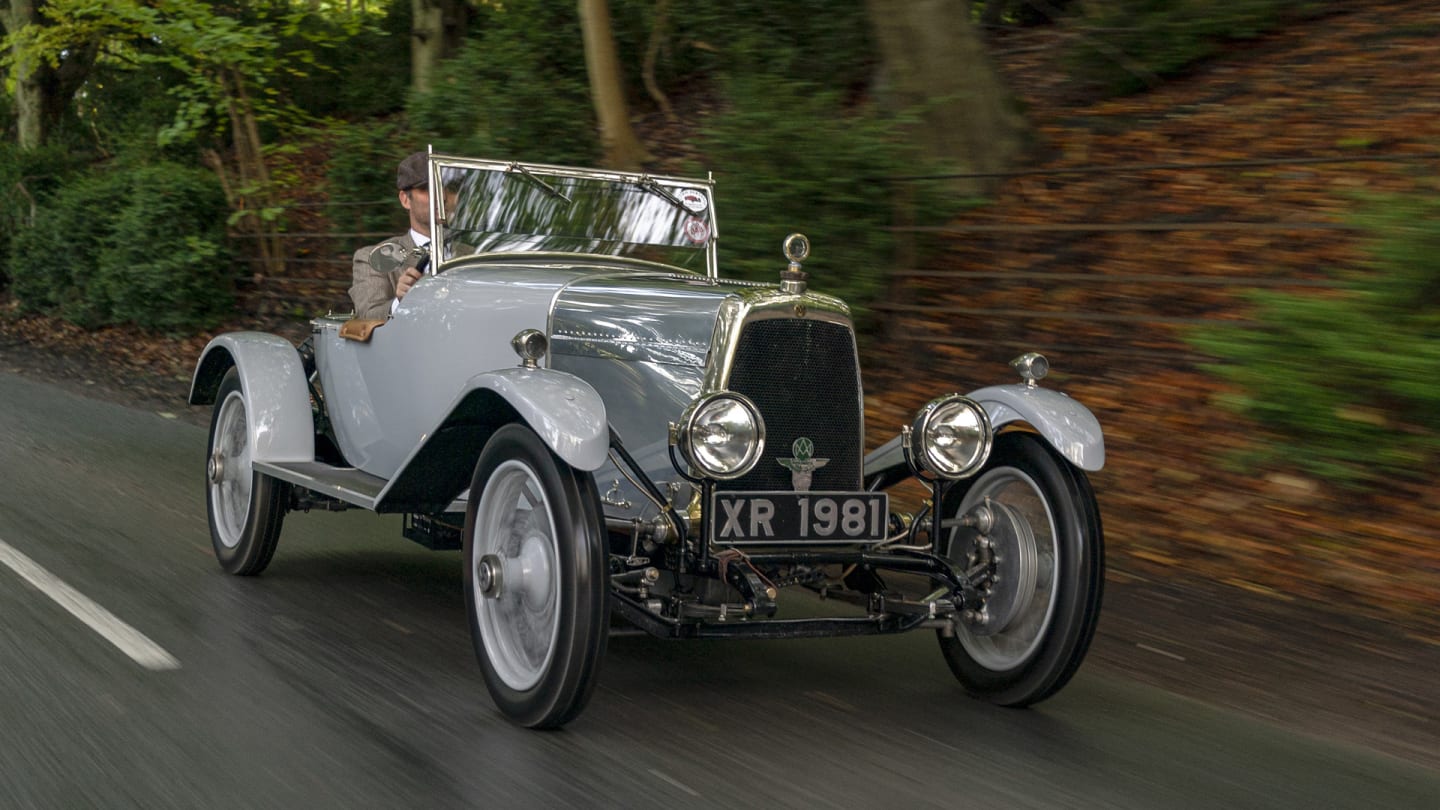
Aston Martin's name stems from the Aston Clinton Hill Climb event
Funding was never easy in the post World War I times and, in spite of producing some fine road and race cars, a variety of investors was needed to keep the company afloat. Lionel was a better car manufacturer than businessman, but there were always those who saw the potential of his company.
In February 1947 British industrialist David Brown (whose own company built transmissions and tractors) acquired the firm. Brown had supported the BRM Formula 1 team in the early 1950s, and he saw motor racing as the obvious way to make Aston Martin a prestigious, desirable marque.
Brown liked the Aston Martin cars but thought they were underpowered, but that was rectified when he also acquired the assets to the Lagonda car company which had on its books a superb twin-cam, six-cylinder engine designed by W.O. Bentley who had joined the firm after Rolls-Royce bought out his own eponymous company. By the end of that year, Brown had the components on which to launch a series of road cars and racers that would become world renowned.
ANALYSIS: How and why Vettel committed his F1 future to Aston Martin
Brown’s real ambition was to win the World Sports Car Championship, which was created in 1953. In the first few years of the series, David Brown’s cars were never quite able to challenge Jaguar, Ferrari and Mercedes, but the Astons gradually became more competitive.
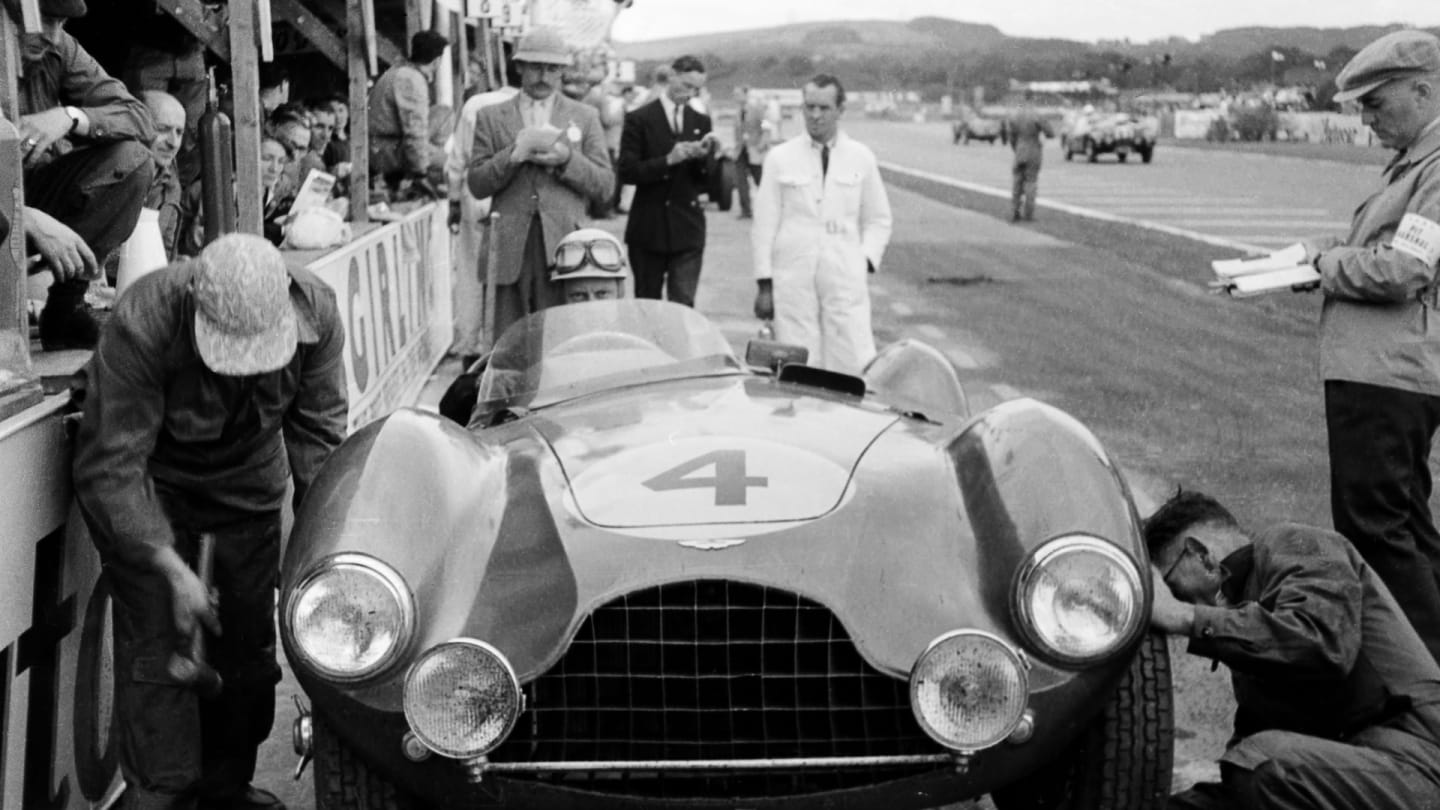
Aston Martin weren't as competitive as the likes of Jaguar when they entered the 1953 World Sports Car Championship
At the time, the leading Formula 1 teams Ferrari, Maserati and Mercedes also raced in the World Sports Car Championship, and David Brown wanted a similar programme for Aston Martin. But while their rivals usually had Formula 1 as their first priority, it always seemed a secondary consideration for Brown.
In 1954, when the new 2.5-litre Formula 1 was introduced, Aston Martin started work on a Formula 1 prototype based on their sports car.
With the relatively small team having a hard time in the all-important World Sports Car Championship, it took a full year to complete Aston Martin’s first single-seater, and it only made its race debut in early 1956 in a series of races in New Zealand with British veteran Reg Parnell behind the wheel. Parnell finished fourth in the Lady Wigram Trophy Formula Libre race in Christchurch. Reg would later become Aston Martin’s team manager.
READ MORE: Why is it called Formula 1 – and 12 other questions about the championship’s origins
The prototype never took part in an FIA Formula 1 World Championship round, and for the following couple of years, Grands Prix again played second fiddle to the World Sports Car Championship. Aston Martin F1 cars were built and tested, but never raced.
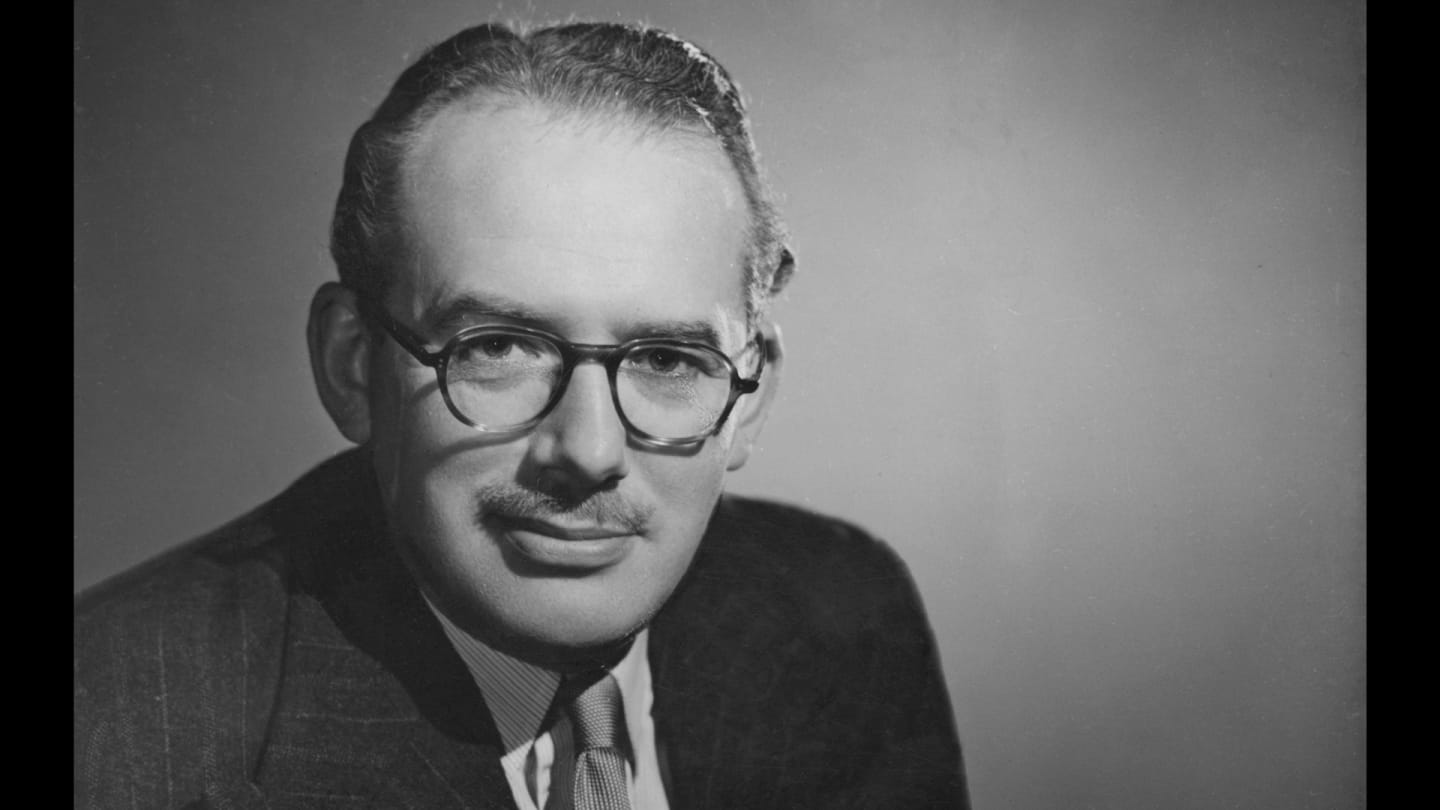
David Brown acquired Aston Martin in the 1940s, hence the 'DB' naming convention on their sports cars
A new proper Formula 1 car was ready for the 1958 season, but again it was neither tested nor raced as Aston Martin concentrated all their effort on their sports car programme. But on October 8 the company’s F1 ambitions finally became official as the company issued a statement confirming a 1959 F1 debut.
While Aston Martin had been busy racing in the World Sports Car Championship and building unraced Grand Prix cars, a revolution had taken place in Formula 1. Cooper were the first manufacturers to put the engine behind the driver in the World Championship, and by 1959 it was clear that mid-engine concept was the way to go.
WATCH: Drivers react to evolving cars, safety and fashions over F1’s 70-year history
The Aston Martin Formula 1 car was finally ready to make its debut in early 1959, and after such a prolonged development programme, the car was almost expected to be somewhat outdated. But after the Cooper it was more than that… Technically, the front-engined Aston Martin DBR4 was now almost a dinosaur.
It made its debut in the non-Championship International Trophy race at Silverstone in early May, when Aston Martin entered two cars for their regular sports car drivers, Roy Salvadori and Carroll Shelby.
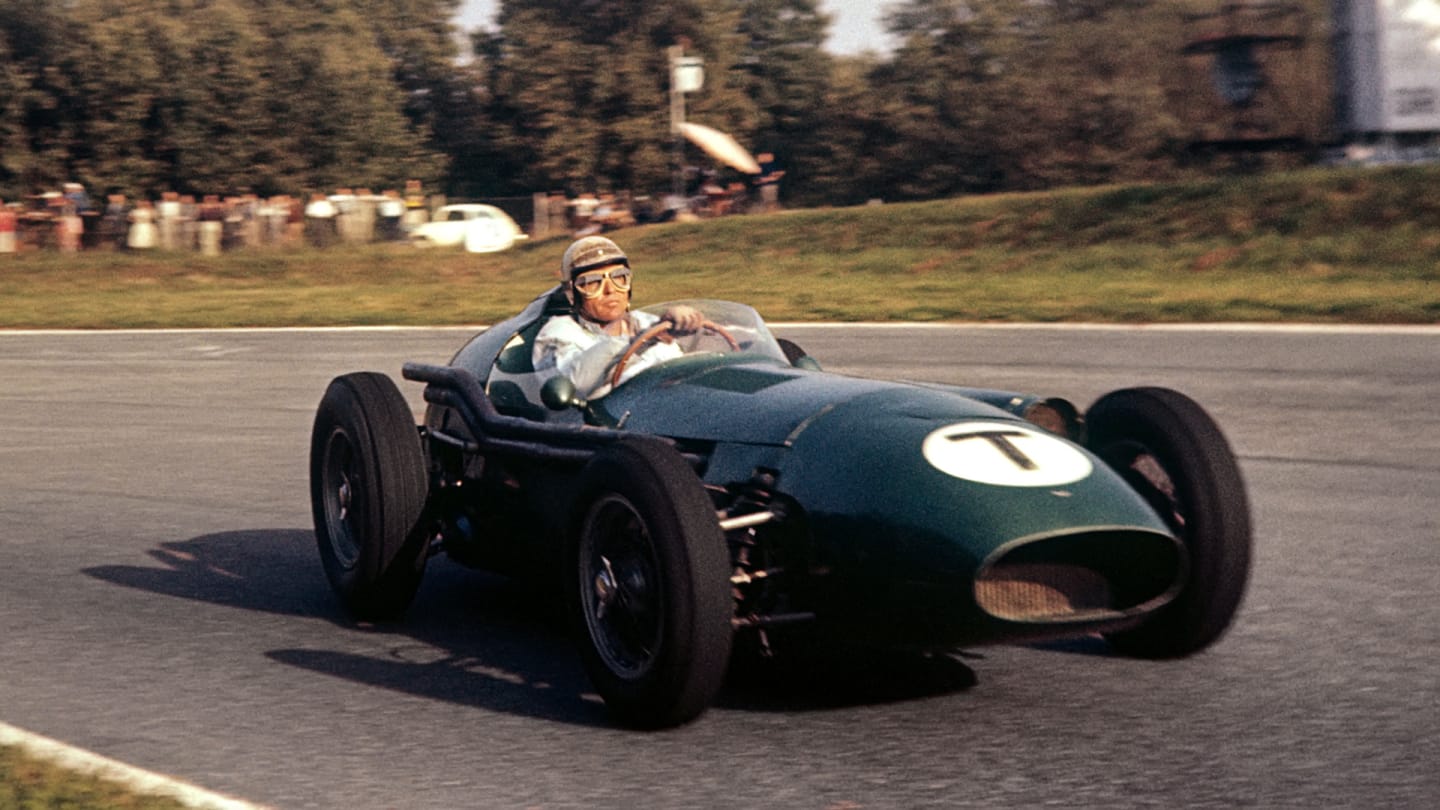
Carrol Shelby at the wheel of the DBR4 at Monza in September 1959
"It was an absolutely fabulous car to drive – perfectly balanced and with roadholding to match any of its rivals," Salvadori said.
"It would have been a race winner in 1958; probably capable of beating that year’s front-engined Ferraris and Vanwalls, and it was competitive in the early part of 1959, but rapidly lost ground as the Cooper and other similar cars were developed during the season."
READ MORE: Who was Giuseppe Farina, F1’s first winner and world champion?
At Silverstone in May, the front-engined cars were still in with a chance, and the Aston Martins actually made a promising debut with Salvadori finishing second behind Jack Brabham’s Cooper.
"Our performance at Silverstone was good enough to mislead us as to our prospects for the rest of the year," Salvadori sadly noted.
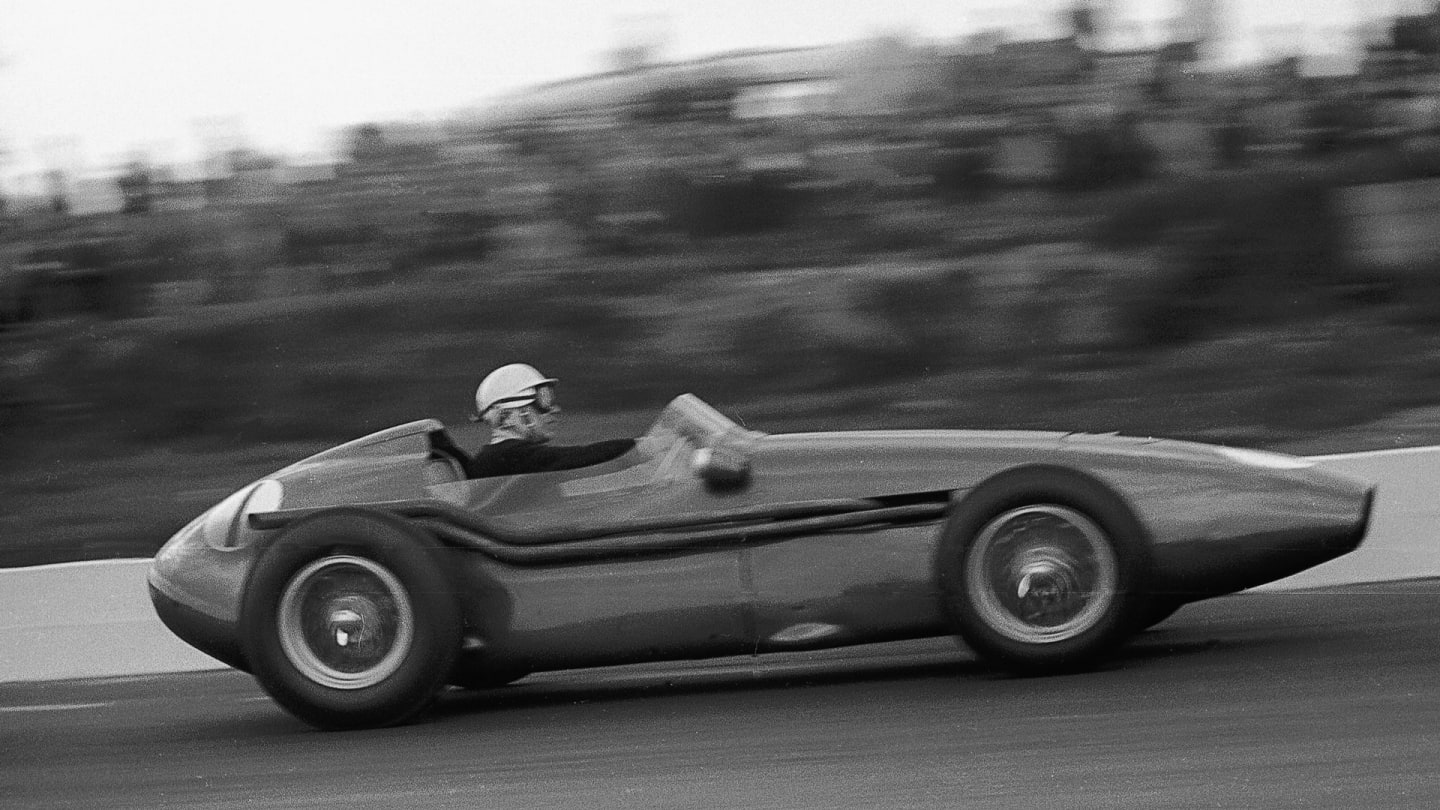
The DBR4 was a 'dinosaur' in 1959; a would-be world beater in 1958
Aston Martin’s debut in the World Championship came a few weeks later in the Dutch Grand Prix in Zandvoort, where Salvadori and Shelby both retired before half-distance.
"It was now that reality struck, and in practice the cars proved disappointingly slow," Salvadori later said.
READ MORE: 10 fascinating facts about the very first F1 Grand Prix
A week after the Dutch Grand Prix, Stirling Moss and Jack Fairman won the third round of the World Sports Car Championship in an Aston Martin. This meant David Brown’s ambition of winning the sports-car title was suddenly within reach, and when Salvadori and Shelby then won the 24 Hours of Le Mans in June, the Formula 1 cars were not even entered in the French Grand Prix…
In the team’s home race, the British Grand Prix at Aintree in Liverpool, Salvadori impressed by qualifying on the front row with a time similar to Jack Brabham’s Cooper on pole position. But the race proved another disappointment with Salvadori only finishing sixth and Shelby retiring. After missing the German Grand Prix, the Portuguese Grand Prix at Lisbon’s Monsanto street circuit just proved that the rear-engined revolution was all but completed with Jack Brabham taking another win in the Cooper and Salvadori and Shelby finishing sixth and eighth.
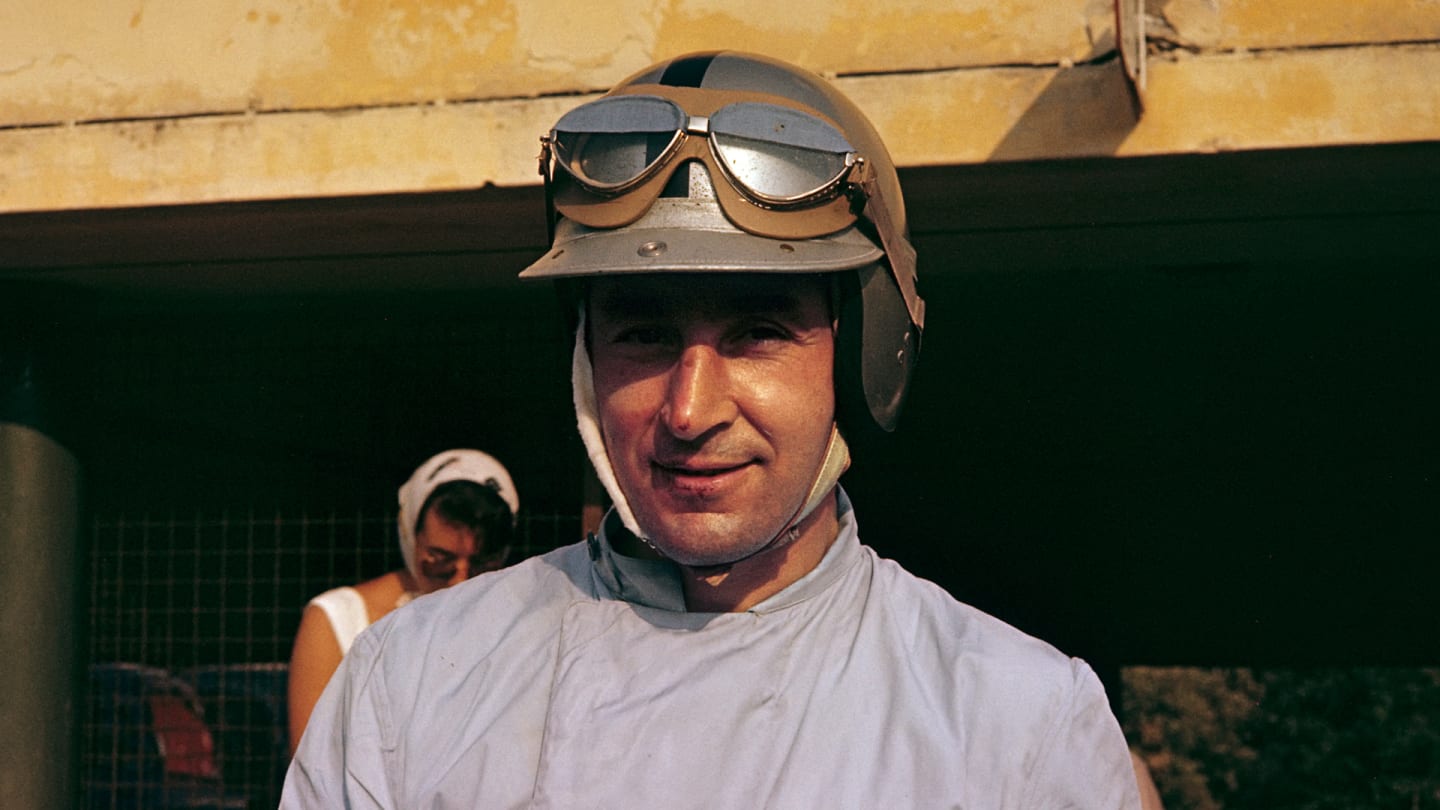
Try as he might, Roy Salvadori could not overturn the rear-engine revolution with Aston Martin's single-seater
The high-speed Monza circuit was expected to be the last bastion of the front-engined brigade, but Stirling Moss took another win for Cooper in the Italian Grand Prix while the Aston Martins ran at the back of the field.
WATCH: When Hamilton and Moss took two classic Mercedes race cars for a spin
After their successful 1959 season, Aston Martin withdrew their works team from the World Sports Car Championship and built what was supposed to be a much better Formula 1 car for 1960. The DBR5 was considerably lighter, more compact and had more horsepower than the DBR4, but it still had the engine in front…
Despite the outdated design concept, Aston Martin now had ambitious plans to enter three cars. Salvadori continued, French veteran and two-time winner of the Monaco Grand Prix Maurice Trintignant replaced Shelby and a young Scotsman was signed as the team’s third driver.
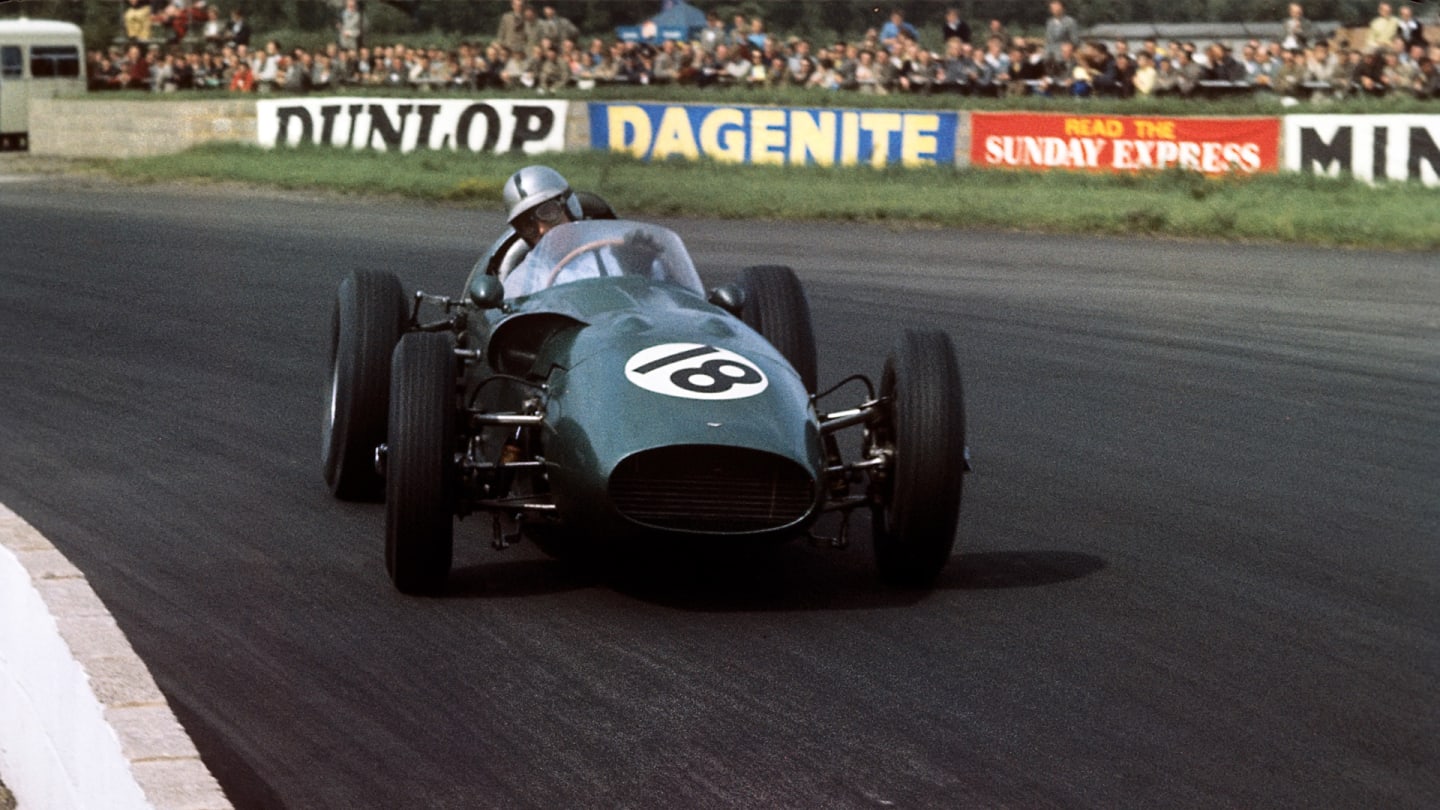
The DBR5 was an evolution but, still front-engined, far from a revolution
Jim Clark was born into a farming family, which ran the Edington Mains Farm outside Chirnside in the Scottish Borders. He was the family’s youngest child and the only son, and his parents were not keen on his interest in motor racing. But Jim displayed enormous natural talent in local and national sports car races in 1958 and 59, and despite limited single-seater experience – he had done a Formula Junior race on Boxing Day 1959 and retired with a flat battery – Reg Parnell signed him for Aston Martin’s 1960 Formula 1 team.
The team’s first race in the 1960 World Championship was the Dutch Grand Prix in Zandvoort. Only one car was ready, and it had the experienced Salvadori behind the wheel.
MUST SEE: Max Verstappen is first F1 driver to try out Zandvoort’s new banking
Lotus, who already employed Clark in their Formula Junior team, had a spare Formula 1 car in Zandvoort, and offered it to Clark. On his F1 debut, he qualified 1.5 seconds ahead of Salvadori’s Aston…
It was the beginning of a great partnership and the end of Clark’s very brief association with Aston Martin. The Scot would never race the Aston Martin DBR5 and instead spent his entire Formula 1 career with Lotus, winning the World Championship in 1963 and '65 and racking up a then-record 25 Grands Prix victories.
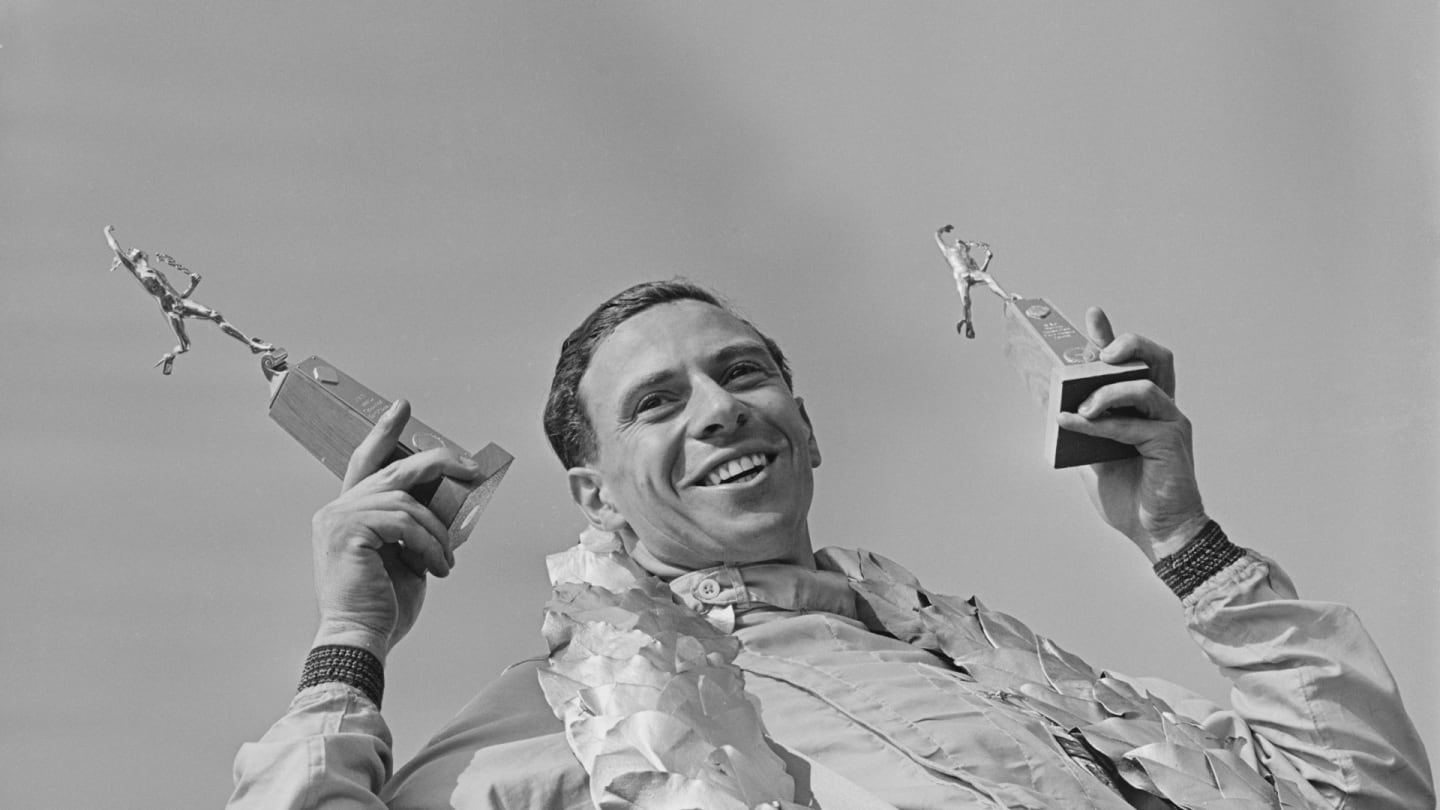
Jim Clark's time with Lotus is the stuff of legend; what would have been had he raced for Aston Martin?
At Zandvoort, Salvadori could not do much with the Aston Martin. The car was just slow, and a second opinion was sought. Stirling Moss, a member of Aston Martin’s successful sports-car team who now raced for Rob Walker’s Racing Team in Formula 1 (and would qualify his rear-engined Lotus on pole position), took the DBR5 out for a few laps, but was not impressed.
Salvadori qualified 18th, and when it turned out that only the top-15 cars would receive starting money, the team packed up and went home before the race.
READ MORE: 5 great moments in Dutch Grand Prix history
Aston Martin’s final Formula 1 appearance came in the British Grand Prix in Silverstone. It was another disappointment and in August 1960 the team formally withdrew from Formula 1.
The first hint of Aston Martin’s renewed Formula 1 ambitions came a few years ago when they entered a partnership with Red Bull, and since 2018 the team’s official name has been Aston Martin Red Bull Racing. That partnership ends after this season.
And in 2021, after a break of more than 60 years, Aston Martin will return to Formula 1 as a works team and will have Mercedes engines. And they will try to do what Mercedes-Benz have done: come back to win!
This feature is from the 2020 Bahrain Grand Prix race programme, which you can download for free here
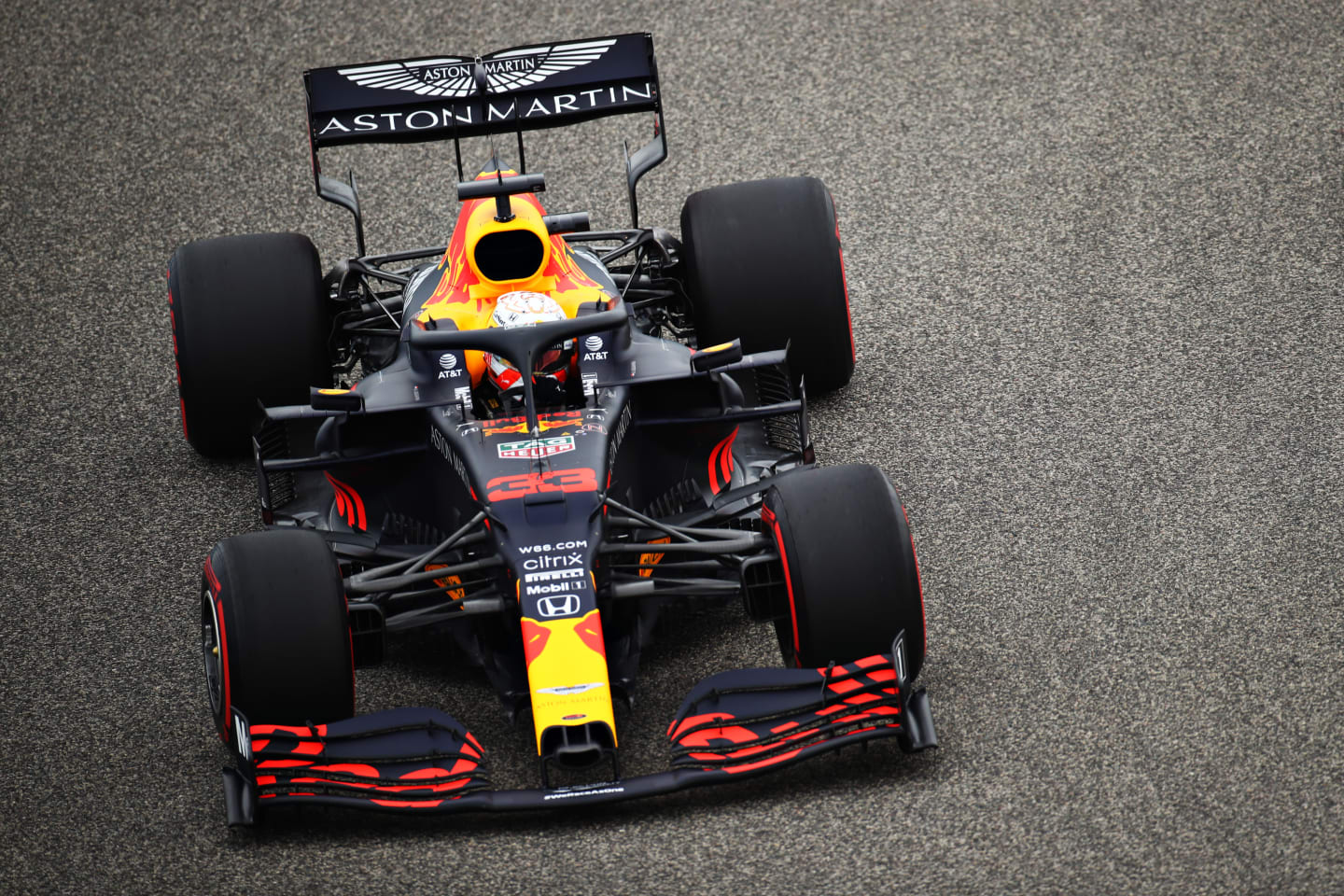
The Aston Martin wings will disappear from Red Bull next season, as will the 'Racing Point' name
YOU MIGHT ALSO LIKE
News ‘The best driver in the world currently’ – Horner lauds Verstappen after Japanese GP masterclass
News Stella explains why McLaren’s hands were tied in strategic Japanese GP battle against Verstappen
Podcast F1 NATION: A first win of the year for Verstappen, but did McLaren miss a trick? It's our Japanese GP review
Feature FACTS AND STATS: Mercedes rookie Antonelli becomes youngest ever race leader and fastest lap holder

